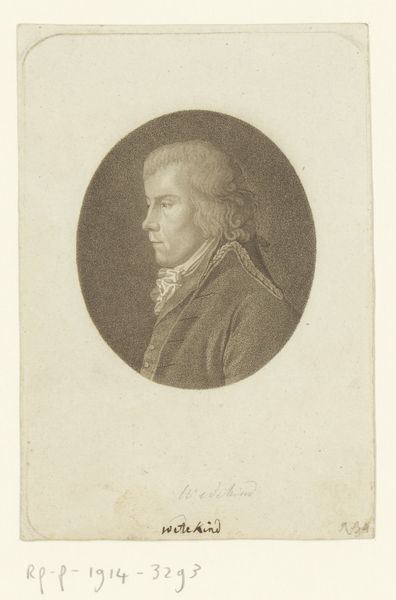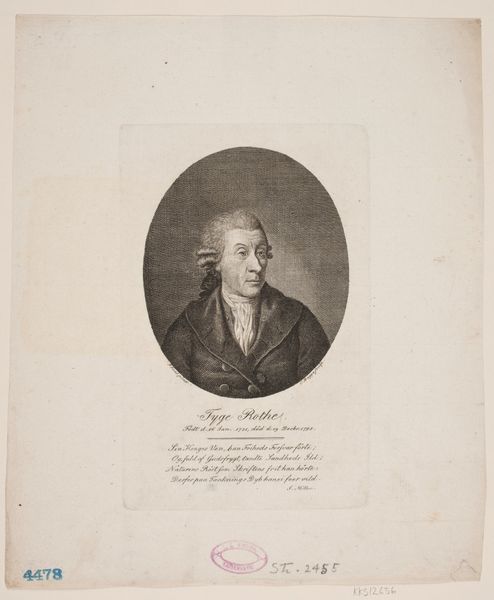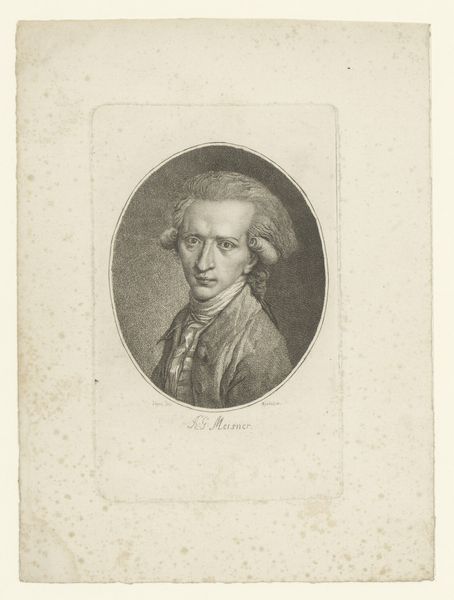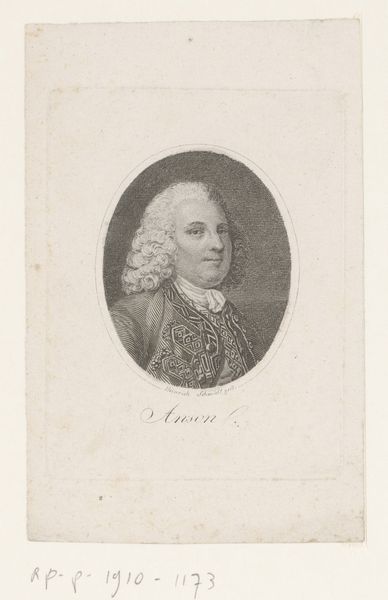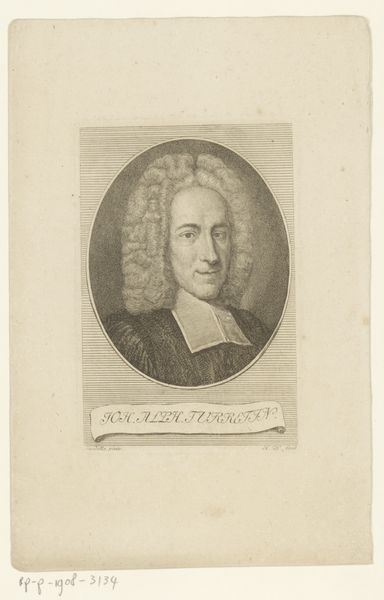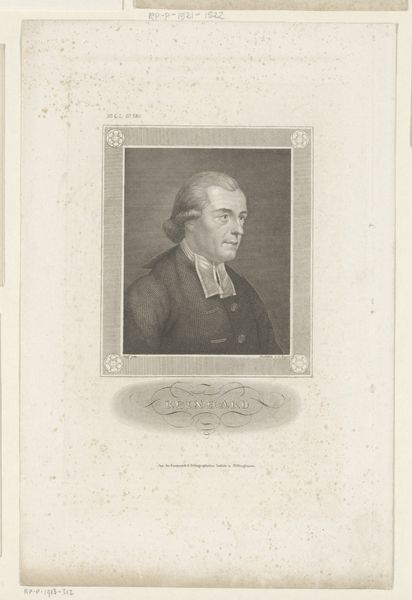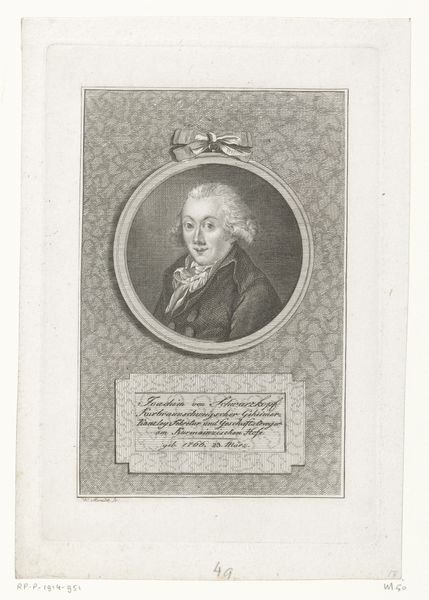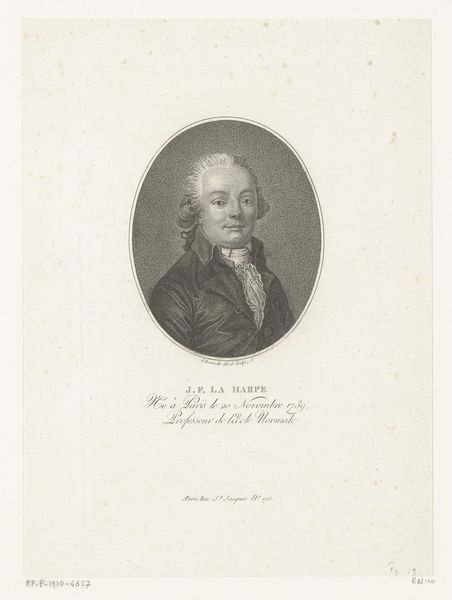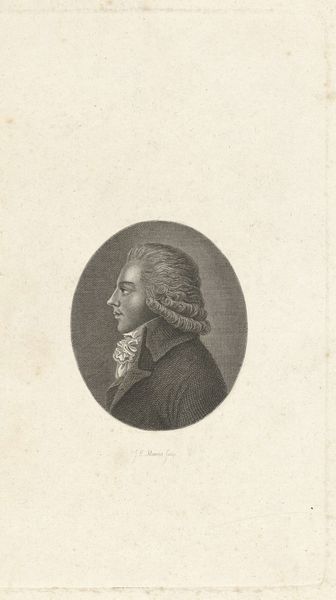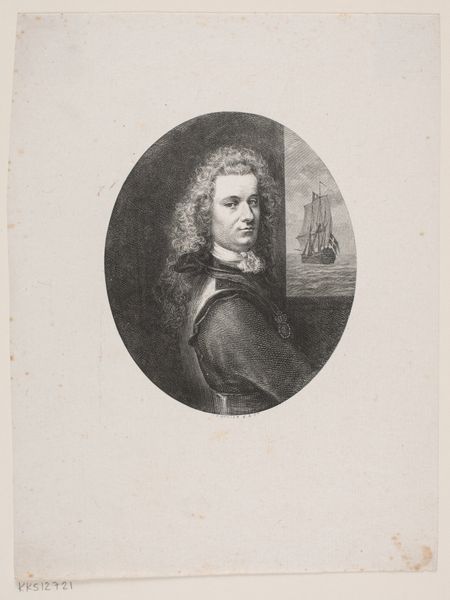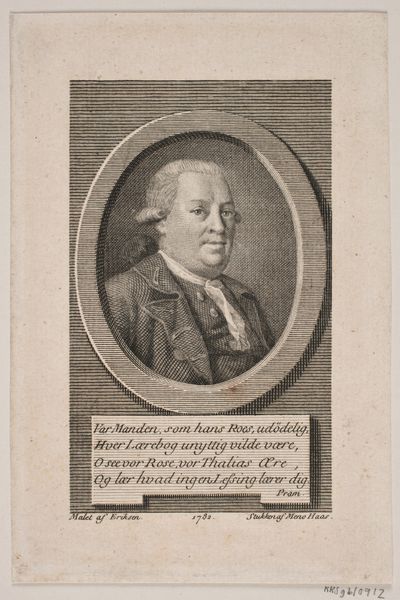
Dimensions: height 178 mm, width 119 mm
Copyright: Rijks Museum: Open Domain
Editor: Here we have Johann Ludwig Necker's "Portret van Johann Christian Mayer," an engraving on paper created sometime between 1766 and 1796. It's so precise! Looking at the texture, or what little there is with the line work, gives a somewhat reserved feeling. How would you interpret this portrait? Curator: It's more than a reserved feeling; I get the sense of Necker subtly capturing Mayer's… ambitions. Portraits weren't just records of faces back then, you know? It was all a performance. Note how the oval border creates a little proscenium, like Mayer’s presenting himself to the world, bewigged and befrilled, ever so aware of his status. Do you notice any contradictions to this "performance" embedded in the line work itself? Editor: Hmmm, interesting! I suppose I do see that in his slightly pursed lips, which conveys that seriousness but there is that ever so slight sense that he is fighting not to smirk just a little. What do you mean by contradictions in the line work? Curator: Yes, precisely! Mayer’s *almost* smiling, caught between his professional persona and his own playful intelligence, which the eyes reflect back at us directly. The engraving itself: look closely. It’s impeccably precise, a demonstration of Necker’s skill but it is created by such regimented strokes; somehow, those strokes fail to capture the liveliness in the eye, creating an interesting tension between what we know he would prefer us to think and what Necker the engraver manages to show, by this tension! And yet it doesn’t break into caricature either! Editor: So, the Baroque period and its love for theatre influenced this staged image, and this staging is subverted by Necker through the very technical skills the engraving asks of him, unintentionally perhaps even making fun of Mayer? It’s fascinating how much it suggests, without really telling you anything. Curator: It tickles, doesn’t it? It suggests that behind every carefully constructed public image is a delicious, unknowable human truth – or truths! This image isn’t just something seen; it becomes an echo in you, isn’t that the wonderful thing!
Comments
No comments
Be the first to comment and join the conversation on the ultimate creative platform.

